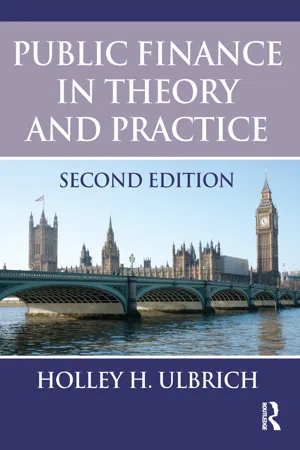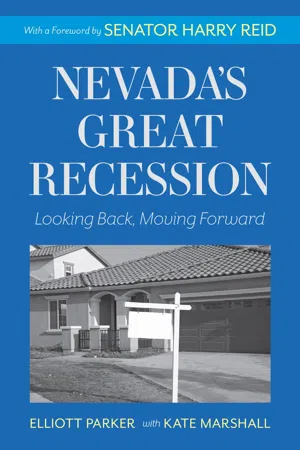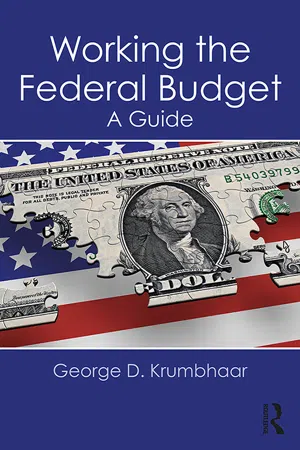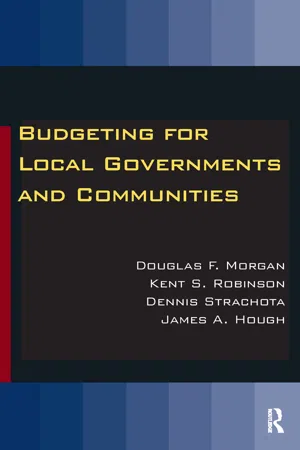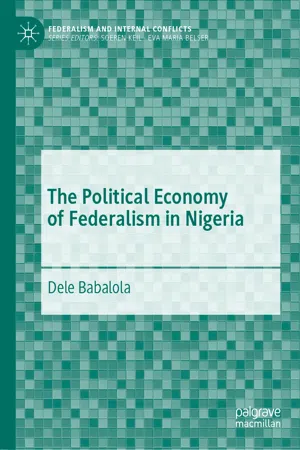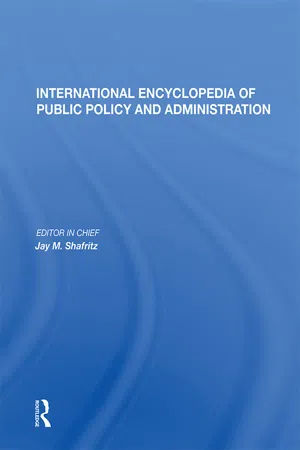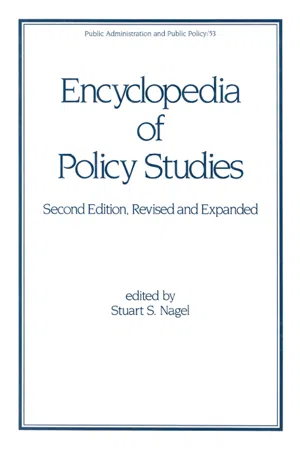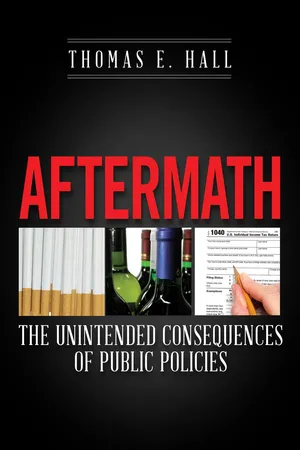Economics
Federal Government Revenue Sources
Federal government revenue sources refer to the various ways in which the government generates income to fund its operations and programs. These sources typically include taxes (such as income, corporate, and payroll taxes), as well as other sources like tariffs, fees, and government investments. Diversifying revenue sources can help ensure stable funding for government activities.
Written by Perlego with AI-assistance
Related key terms
9 Key excerpts on "Federal Government Revenue Sources"
- Holley Ulbrich(Author)
- 2013(Publication Date)
- Routledge(Publisher)
Part 3 Funding Government Taxes, Fees, and GrantsThe next seven chapters address the revenue side of government: the funds to pay for public programs, the distribution of the burden of paying for government, and the use of revenue instruments as means toward specific policy ends. The primary revenue source for government is taxes. Taxes are the focus of the next five chapters.The first two chapters explore the theory and practice of tax system design. The next three discuss each of the broad categories of taxes—income, sales, and property. The final two chapters in this part examine two other important revenue sources, fees and charges and intergovernmental grants.According to Justice Oliver Wendell Holmes, taxes are the price we pay for a civilized society. That dictum still leaves room to argue over whether the taxes are too high relative to the amount of civilization that citizens want or need or actually receive in return. It does mean that taxes are an inevitable part of living in society. Given the necessity of taxes, it is the economist’s task to provide some guidance in designing a tax system that minimizes the undesired side-effects of collecting them (efficiency) and apportions the burden in some way that addresses the equity concerns raised in Chapter 5 .Although taxes are still the primary form of revenue for governments at all levels, they are not the only source. Fees and charges, discussed in Chapter 16 , are a second and increasingly important way of paying for services that have some advantages in terms of both efficiency and equity. In both unitary and federal systems, intergovernmental grants represent an important supplement to own-source revenues for lower levels of government, a subject addressed in Chapter 17- eBook - ePub
Nevada's Great Recession
Looking Back, Moving Forward
- Elliott Parker, Kate Marshall(Authors)
- 2017(Publication Date)
- University of Nevada Press(Publisher)
CHAPTER 6
Federal Fiscal Policy
In 1790, the nation which had fought a revolution against taxation without representation discovered that some of its citizens weren’t much happier about taxation with representation.— LYNDON B. JOHNSON 1IntroductionMany discussions about taxes begin with the assertion that they are rising out of control. In the past thirty-five years, the revenue collected by the U.S. government—federal, state, and local—has grown more than fivefold. Income taxes are the largest source of federal government revenues, followed by payroll taxes for social insurance programs. Corporate income taxes and other federal taxes make up a small share of total federal revenue, and federal revenue makes up the majority of all taxes paid to all levels of government. Figure 6.1 shows how much the federal government collects if we adjust for price inflation; since 1980 the total has grown by 166 percent.The problem with presenting these data in this way is that we fail to account for the gradual annual increase in the U.S. population, and for rising real incomes that affect how much federal, state, and local governments must pay to their employees to compete with the private sector. We can divide by GDP to get a more meaningful number, but this would make government revenue look relatively higher during recessions and lower during booms. To get a more stable ratio, we should divide by the economy’s estimated potential GDP , which is reported by the Federal Reserve Bank of St. Louis.2As a share of potential GDP , government receipts have been much more stable over the past three to four decades (figure 6.2 - eBook - ePub
Working the Federal Budget
A Guide
- George D. Krumbhaar(Author)
- 2017(Publication Date)
- Routledge(Publisher)
In the current budget debate there is bipartisan support for major revisions in the tax code, even if there is little agreement on the specifics. This section looks at how tax legislation comes to the floor, and why major revisions are hard to come by. Revenue Sources The federal government has two major kinds of income. They consist of: • Government receipts. These include personal income and corporation taxes, customs duties, estate taxes—in fact, anything the government gets through the exercise of its sovereign power. • Offsetting receipts and offsetting collections. These are funds the government gets when it acts more or less like a business selling, say, electricity (TVA), vacations (national park access), and books (the budget). These distinctions are important enough that the money from them shows up in different parts of the budget. Government Receipts The federal government collected approximately $2.2 billion in tax revenues in FY 2015. Figure 9.1 shows that the largest components were personal income taxes, which formed almost one-half of all receipts, and “social insurance taxes and contributions” such as Social Security and unemployment trust fund income. Corporation income taxes formed a large, but significantly smaller share of the total. Federal excise taxes, at three percent of the total, covered such items as federal taxes on alcohol and tobacco. Customs duties, which in the early years of the Republic formed the largest share of federal revenues, now form approximately one percent. Estate and gift taxes, while politically sensitive, were less than one-tenth of one percent of total federal revenues - William Duncombe(Author)
- 2018(Publication Date)
- WSPC(Publisher)
We begin this lecture with a brief description of the tax system in this country. The tax system — reflecting our complicated federalist system — is a complex web of different tax types used by different levels of government and revenue sharing between levels through intergovernmental grants. We will then turn to a brief discussion of revenue forecasting, which is a crucial part of the budgeting process. Finally, the bulk of the lecture will be devoted to a discussion of the criteria typically used to evaluate tax policies and government revenue sources.9.2Overview of the Tax System
As you are well aware, the US has a very diverse system of government, with the federal, state, and local governments each playing an important role in the provision of public goods and services. Although federal, state, and local governments spend similar amounts of the total public budget, they finance these expenditures with significantly different revenue sources. As illustrated in Table 9.1 :1.Federal revenue comes primarily from the personal and corporate income tax and the payroll tax used to finance the social security system (not included in individual income taxes in Table 9.1 ). Although the federal government does use various excise taxes and import duties, it does not employ either a general sales or property tax.2.State revenue comes from a variety of sources. The major source of tax revenue is sales and excise taxes which account for half of state tax revenue. Personal income taxes are the other major source of state tax revenue. State governments do not generally use a property tax. In addition, federal aid is an important source of revenue for state governments (24% of total revenue). For New York, we see that personal income tax is the most important state source of revenue representing 46% of state revenue and almost 60% of state taxes. Consumer taxes (sales taxes) are less important in New York with 17.3% of state revenue and 23% of state taxes. This highlights the diversity across states in their tax systems. For example, four states do not have a general sales tax and seven states do not have a personal income tax.Table 9.1. Percentage distribution of tax revenue for each level of government, FY 2010.a Note: Excludes social insurance contributions.Sources: US Bureau of Census, Governments and Budget of the US Government.Source: Thomas P. DiNapoli, “Citizens Guide 2009: A Pocket Reference to New York State’s Finances,” New York State Comptroller, pg. 2. https://www.osc.state.ny.us/finance/finreports/citizens_guide/citizensguide2009.pdf- eBook - ePub
- Douglas Morgan, Kent S. Robinson, Dennis Strachota, James A. Hough(Authors)
- 2017(Publication Date)
- Routledge(Publisher)
Braybrooks, Ruiz, and Accetta 2011 , 5). A state level property tax for K-12 provides one means of equalizing school funding across a state. Inheritance and estate taxes provide a typically minor but politically sensitive source of revenue. Severance taxes on the extraction of petroleum, natural gas, and hard rock minerals, or on the harvest of timber, provide a substantial source of revenue for several states. State-owned lands and utility rights of way generate rental revenue.Unique to the state level, many state governments operate a lottery. Lottery profits provide a steady source of unencumbered nontax general revenue. Lottery dollars may be earmarked for a particular program or purpose, or used as annual revenues to pay off bonds. Local governments may receive a pass-through of lottery funds, but most lottery revenues remain at the state level.In contrast to the relatively limited contribution of federal intergovernmental funds at the local government level, federal transfers provide a major source of revenues at the state level for a broad array of programs. A listing of some of the major federal intergovernmental programs follows (Federal Funds Information for States [FFIS] 2011). Federal transfers for nutrition, social service, and child care programs are substantial. These transfer funds include: Women, Infants, and Children (WIC) and Supplemental Nutrition Assistance (SNAP); Temporary Assistance to Needy Families (TANF) annual block grant; Child Care and Development block grants; Child Welfare funds; Social Services Block Grants; Head Start early childhood learning funds; and Low-Income Home Energy Assistance funds. Federal funds support major health programs as well: Medicaid administration and Medicaid provider reimbursement for qualifying low-income citizens; Children’s Health Insurance Program; Mental Health Services block grant; and the Substance Abuse block grant. Many of these programs require a state percentage match for each federal dollar, or the maintenance of state spending effort. The unemployment insurance program in each state is jointly funded by federal and state payroll taxes but administered as a federal trust fund with payments to states. Federal dollars support programs for adult and youth worker training and for dislocated worker assistance. Federal funding provides critical support to state and local housing programs. The HOME investment partnership program, the Section 8 Rent Subsidy programs, the Community Development Block Grants (CDBG), the Community Services Block Grant, and housing for the elderly draw on federal funds. Federal Homeland Security funds support grants to states and to local governments for security, emergency response, and emergency preparedness. Department of Justice programs fund the Community Oriented Policing Services (COPS) and policing grants to local sheriff and police departments, the Violence Against Women program, and the Juvenile Accountability block grant. Federal transportation dollars provide substantial resources for airport, highway, and mass transit facility construction. Federal environmental funds support energy weatherization and clean drinking water programs. - eBook - ePub
- Dele Babalola(Author)
- 2018(Publication Date)
- Palgrave Macmillan(Publisher)
The union might look more like a confederation than a federation. From the economic point of view, there is firstly a desire to ensure a uniform rate of customs and excise duties and a free flow of commodities among the units. There is secondly an attempt to place in the hands of the federal government a reliable source of revenue so that it can, without too much difficulty, meet the demands of preserving the territorial integrity of the federation and the internal constitutional order. Typically, the central governments in federal countries collect taxes and then distribute the proceeds to constituent governments according to some agreed formula. This is not different in Nigeria where Section 162(1) of the 1999 Constitution provides that the federal government deposits all centrally collected revenues into a general pool, called the Federation Account, to be shared vertically and horizontally. It is important to stress that states and local governments keep their internally generated revenues. In Austria and Germany, fiscal federalism is characterised overwhelmingly by revenue sharing, with constituent units having very limited independent own-source revenue (Anderson 2010, p. 55). Conversely, in Canada, Switzerland and the United States, constituent units control their tax revenues, with negligible or no revenue sharing (but some fiscal transfers), and in Australia, in addition to fiscal transfers, states share all of the federally levied VAT (Anderson 2010, p. 55). In Nigeria, the states’ sources of revenue are less lucrative compared with those of the federal government. They are also not adequate to match their constitutional responsibilities. Therefore, the states are left with no option but to depend on the centre in order to bridge their fiscal gap. Local governments generate revenue from liquor sales, birth and death registrations, environmental violations and fines, motor parking dues, and market stalls dues - Jay M. Shafritz(Author)
- 2019(Publication Date)
- Routledge(Publisher)
In the context of fiscal policy, government expenditures, on one hand, include the goods and services purchased by the federal government. National defense, highway construction and maintenance, education, and federal research and development projects are all examples of government expenditures. Government expenditures may vary from year to year, but they are not typically sensitive to changes in the GDP during the year. On the other hand, taxes include both programs to generate federal revenues (e.g., income taxes, corporate profits taxes, and social security taxes) and social programs that transfer income across individuals (e.g., Aid to Families with Dependent Children [AFDC], Social Security benefits). Net taxes are defined as tax revenues minus transfer payments. Net taxes fluctuate with the GDP.Fiscal policy provides an alternative to monetary policy and supply-side economics. Monetary policy is also a demand-side policy. It influences aggregate demand indirectly by changing the money supply. Increasing the money supply directly increases consumption demand and decreases interest rates. Lower interest rates stimulate investment and consumption demand (see monetary policy ). Supply-side economics hypothesizes that economic expansion must be supported by growth in productive capacity or it will increase prices rather than the GDP. Supply-side economics proposes reducing marginal tax rates to increase the labor supply and capital investment. Presumably, this increases economic capacity to accommodate growth while reducing prices (see supply-side economics ).Classical Economics and Fiscal Policy
Classical economics, the prevailing economic theory in the United States prior to the Great Depression, hypothesizes that market economies are inherently stable. In particular, the actual GDP automatically adjusts to the economy's productive capacity, called potential GDP. Economic capacity is determined by the quantity and quality of resources available (e.g., labor, capital, and natural resources). If resource prices are flexible, they will adjust until resources are fully employed and the economy is operating at economic capacity. If resources are underemployed, their prices will fall. Production becomes more profitable as resource prices fall, encouraging firms to expand output. The GDP expands until underemployment is eliminated. Conversely, prices will increase for overemployed resources, reducing profits, decreasing production, and eliminating overemployment.- eBook - ePub
- Stuart Nagel(Author)
- 2020(Publication Date)
- CRC Press(Publisher)
20Taxing and Spending Policy
Peter Fisher
University of Iowa, Iowa City, IowaWarren J. Samuels
Michigan State University, East Lansing, MichiganLarry L. Wade
University of California, Davis, CaliforniaI. TAXES
A. Fiscal Federalism and Tax Structure
Taxes are mandatory contributions extracted from individuals and firms by governments for public purposes. In 1989, 77% of the general revenue of federal, state, and local governments combined consisted of tax receipts. The remainder consists of charges for services, fines, interest, rent, and other miscellaneous revenues. Individual and corporate income taxes account for 89% of federal tax revenues; states rely primarily on sales and income taxes, whereas local governments derive most of their tax revenue from property taxes. Although states and localities collected about $469 billion in taxes in 1989, compared with $616 billion collected by the federal government, the federal government transferred $126 billion to states and localities. These intergovernmental payments, for such things as welfare, education, and highways, permitted states and localities to spend about $762 billion, nearly matching the federal government’s direct general expenditure of $783 billion (Table 1 ).The federal share of tax collections has been declining in recent decades. In 1957, the federal government accounted for 71% of tax revenues; this figure had declined to 61% by 1979 and to 57% in 1989. The states have accounted for most of the difference; the state share of tax revenues increased from 15% in 1957 to 26% in 1989. Despite these shifts, the relative importance of different kinds of taxes has changed little; the property tax has accounted for about 13% of total tax revenues throughout most of the period between 1957 and 1989; the percentage accounted for by sales taxes has hovered around 21 %, whereas income taxes have generally accounted for 59% to 61% of tax revenues. - eBook - ePub
Aftermath
The Unintended Consequences of Public Policies
- Thomas E. Hall(Author)
- 2014(Publication Date)
- Cato Institute(Publisher)
The great irony of the U.S. federal income tax is that the original supporters apparently gave little thought to what to do with the revenue it would generate other than to use it to reduce the federal government’s dependence on tariffs and excise taxes as funding sources. This lack of foresight likely occurred because income tax advocates had no idea how much revenue the tax would actually bring in. In fact, what happened was the income tax—originally created to shift the tax burden away from the middle and lower classes and toward the upper-class capitalists—turned out to be the mother of all cash cows. It brought in unprecedented amounts of revenue, and by doing so had the unintended consequence of allowing the enormous expansion of the federal government. The income tax was instrumental in helping create the huge federal bureaucracy that many Americans complain about today.Rise of the Super-richIn 1789, the upper strata of American society consisted of landowners in the South and merchants who were primarily located in the North. For example, Virginians George Washington and Thomas Jefferson were wealthy because they owned large amounts of property in the form of land and slaves, and they earned their incomes primarily from selling crops produced by that property. Wealthy landowners paid property taxes, and those taxes were the major source of revenue to state governments at the time.1The merchants earned their incomes from exporting goods produced in North America, such as tobacco and rum, and importing finished goods and slaves. These merchants paid tariffs, or customs duties, on imported goods, and that revenue was the primary source of funds for the federal government. The government collected tariffs from the merchants, but consumers actually paid the tariffs in the form of higher prices for the imported goods.This system of taxation was essentially unchanged until the Civil War (1861–1865). When the conflict erupted, the government needed additional revenue to finance the U.S. military effort. So Congress passed several tax laws that raised tariffs; increased excise taxes on many products, including alcohol and tobacco; and imposed the nation’s first federal income tax. The public was amenable to these taxes because they supported the war. But when the war ended, the taxes were no longer viewed as necessary, so Congress eliminated many of them, including the income tax. It retained the higher tariffs on imports and the excise taxes on alcohol and tobacco. The federal government was once again largely dependent on import tariffs and excise taxes on alcohol and tobacco for revenue. States continued to rely on property taxes.
Index pages curate the most relevant extracts from our library of academic textbooks. They’ve been created using an in-house natural language model (NLM), each adding context and meaning to key research topics.
